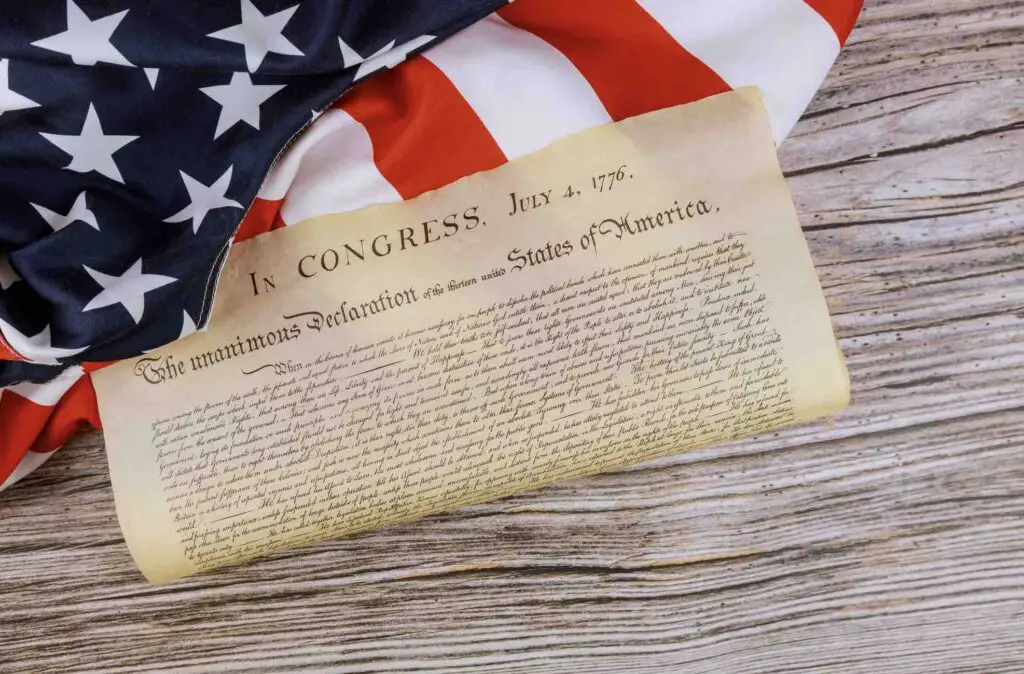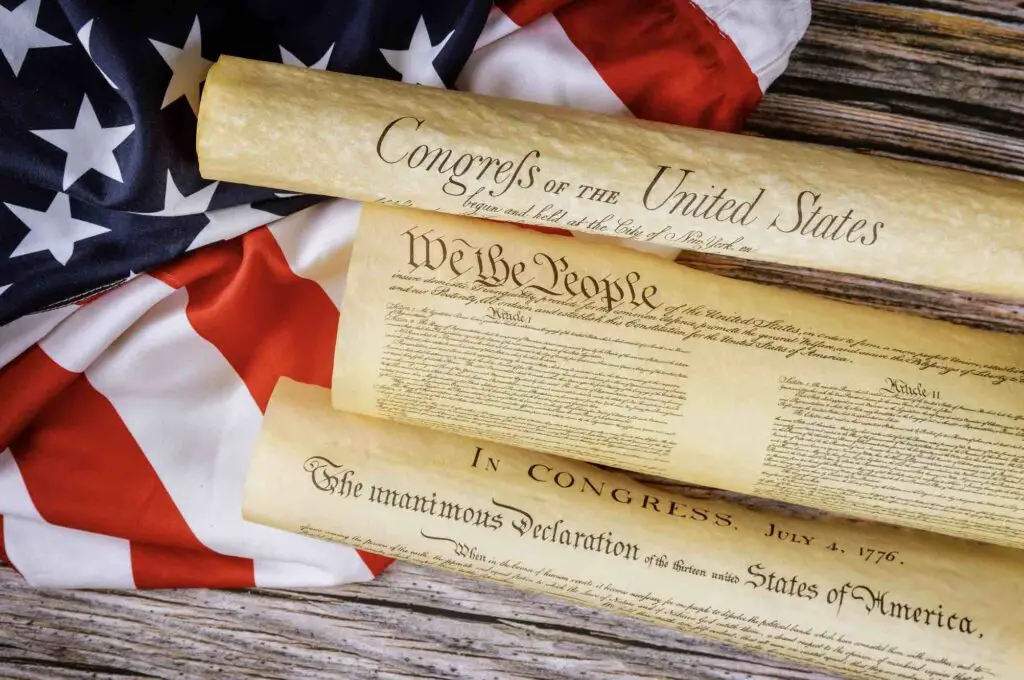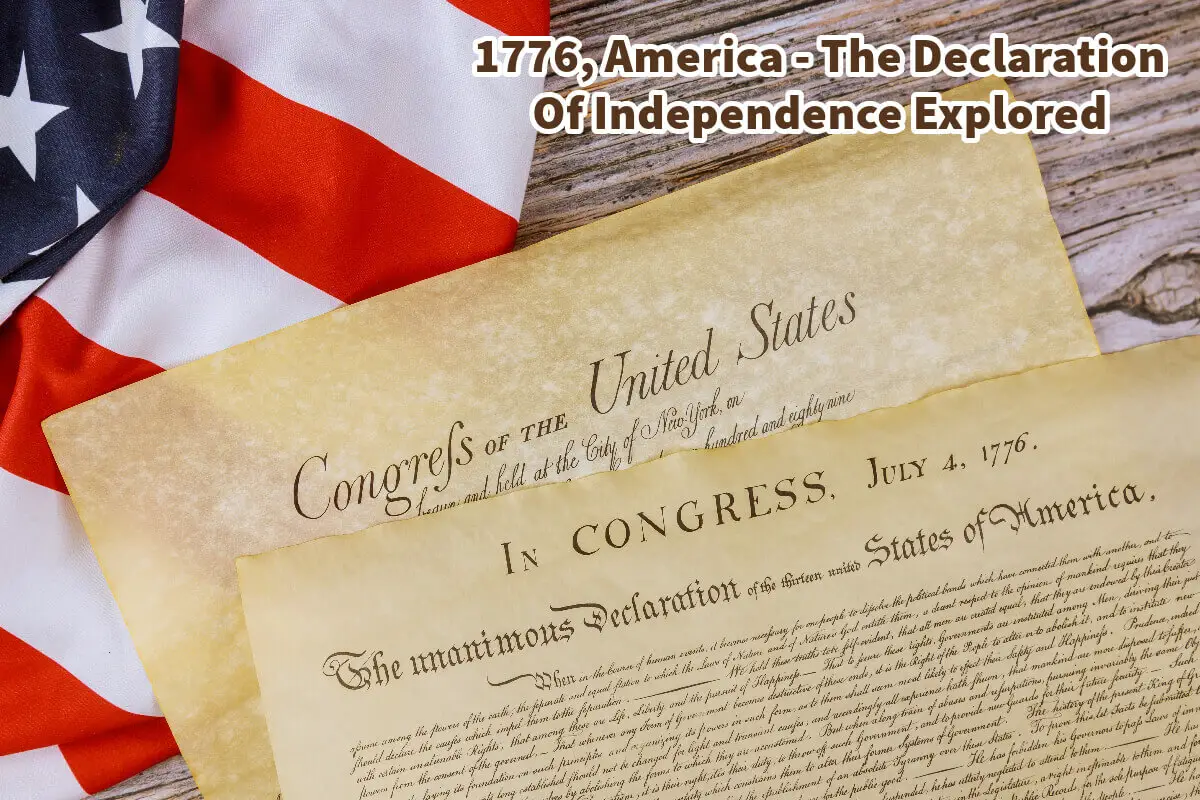When the year 1776 is mentioned, it immediately conjures images of the Declaration of Independence for most Americans. This pivotal moment, when the Continental Congress officially adopted the Declaration on July 4, is more than a historical milestone.
1776 is the foundational bedrock that shaped America’s identity, guiding principles, and governance structures. It marked a definitive end to British rule and heralded the emergence of a new, sovereign nation. This year holds a deep significance for countless Americans, symbolizing the birth of a country built on freedom, equality, and self-governance. Read on as we explore more about 1776 and the Declaration of Independence.
Table of Contents
- The Declaration Of Independence, 1776: A Deep Dive Into America’s Founding Document
- Drafting The Declaration Of Independence
- 10 Reasons Why The Declaration Of Independence and July 4th Was So Significant
- What Does 1776 Mean For Americans Today?
- Related Questions
The Declaration Of Independence, 1776: A Deep Dive Into America’s Founding Document
The Declaration of Independence, adopted by the Continental Congress on July 4, 1776, serves as a cornerstone of American history and a critical founding document that informs the nation’s collective ethos and governance. This watershed event signaled a clean break from Great Britain and set the stage for developing a new, independent nation.

Background And Context Of 1776
The 1760s and early 1770s were fraught years for the American colonies. Dissatisfaction with British rule was rampant due to punitive taxes and unfair laws. Attempts to resolve the issues through protests and petitions had failed, driving the colonies towards the radical path of independence.
Colonial leaders initially hoped for reconciliation with Britain, but several key events and publications pushed the public sentiment toward independence.
Benjamin Franklin engaged in secretive communications to procure aid from France, and Thomas Paine’s “Common Sense” became a clarion call for freedom. By the winter of 1775-1776, independence seemed plausible and inevitable.
Drafting The Declaration Of Independence
On June 7, 1776, Richard Henry Lee of Virginia introduced a motion in the Continental Congress to declare independence. Although there was some resistance and hesitation, a committee was formed to draft the Declaration.
Thomas Jefferson was tasked with writing it and assisted in the editing process, by John Adams and Benjamin Franklin.
Jefferson’s draft went through several revisions to remove potentially contentious sections, including those that blamed King George III for the transatlantic slave trade and those that targeted the British people rather than their rulers.
Finally, the Congress adopted the Declaration on July 4, 1776.
British Reaction And Diplomatic Gains To The Declaration Of Independence
The British initially dismissed the Declaration as an act of rebellion without consequence, attempting to undermine it through propaganda.
However, internationally, the Declaration had profound implications. It helped secure vital foreign alliances with countries like France, eventually leading to American victory in the Revolutionary War.
10 Reasons Why The Declaration Of Independence and July 4th Was So Significant
For any American, July 4, 1776, isn’t just a date to remember; it’s a seminal moment that defines our national identity.
Even today, July 4 remains a significant holiday, celebrated as Independence Day across the United States. This day symbolizes America’s courageous decision to break free from British rule, forever changing the course of history.

It marks when our founding fathers boldly declared the colonies’ independence, laying the foundation for a new nation built on freedom, equality, and self-governance.
July 4 is much more than a holiday; it embodies what it means to be American. Below is what July 4, 1776, symbolizes to any American
1. Birth Of A New Nation
The Declaration formally established the United States as an independent and sovereign, ending British rule.
2. Ideological Foundation
The Declaration provided the philosophical foundation for a government based on the consent of the governed, establishing principles of equality and liberty.
3. Diplomatic Leverage
The Declaration allowed the U.S. to enter formal alliances, most notably with France, which was crucial in winning the Revolutionary War.
4. Inspired Global Movements
The ideas in the Declaration inspired other movements for independence and human rights worldwide.
5. Fostered National Unity
Declaring independence united the colonies in a shared purpose, solidifying their resolve against British rule.
6. Economic Autonomy
With independence, America could establish its trade policies and grow its economy without British interference.
7. Legal Precedence
The Declaration is a fundamental document cited in countless American legal cases and legislative actions.
8. Cultural Icon
The Declaration became an iconic representation of American values and is revered in the national consciousness.
9. Empowered Individual Rights
The principles laid out in the Declaration paved the way for the Bill of Rights and the establishment of a government designed to protect individual liberties.
10. Enduring Relevance
The ideals expressed in the Declaration continue to guide American policies and provide a framework for interpreting the Constitution.
What Does 1776 Mean For Americans Today?
The Declaration of Independence is more than a historical document. It continues to symbolize freedom, equality, and the indomitable spirit that defines America.
The principles it espouses are timeless and serve as a reminder of the sacrifices made to attain the liberties enjoyed today. As such, the Declaration is a living document, its words still resonating with every generation of Americans who strive for liberty and justice for all.

The Declaration of Independence wasn’t just an announcement of separation from Britain but a groundbreaking statement of democratic principles and human rights. Its adoption was a seminal event that changed the course of history for the United States and the world.
More than two centuries later, the Declaration’s influence remains strong, inspiring those who seek freedom and equality. It continues to be a significant day for any American.
At A Bus On A Dusty Road, we talk about everything about travel, life, sailing, and ex-pat living. We are all about “Living Life As A Global Citizen.” We explore social, cultural, and economic issues and travel.
We would love to have you be part of our community. Sign up for our newsletter to keep up-to-date by clicking here. If you have any questions, you can contact me, Anita, by clicking here.
Listen to our Podcast called Dusty Roads. You can find it on all major podcast platforms. Try out listening to one of our podcasts by clicking here.
Subscribe to our A Bus On A Dusty Road YouTube Channel filled with great videos and information by clicking here.
Related Questions
What Is The Difference Between U.S. And North America?
The United States, often abbreviated as the U.S., consists of 50 states. On the other hand, North America is a continent that includes not only the U.S. but also countries like Mexico and Canada, among others. Let’s delve deeper into the nuances that differentiate the United States from North America.
By clicking here, you can discover What Is The Difference Between U.S. And North America?
Was George Washington The Richest Man In America At Some Point?
George Washington was undoubtedly a wealthy man of his time, but records suggest that Benjamin Franklin and Robert Morris may have outdone him in the riches department. While their wealth is well-known today, both men had extraordinary financial clout during Washington’s era – making them two potential powerhouses of money back then richer than George Washington.
By clicking here, you can discover Was George Washington The Richest Man In America At Some Point?
What Is The Biggest State In America?
Alaska is the largest state when you look at land mass. It is also one of the least populous states. The most significant state population is California, but its land mass is not as large as Alaska. Alaska and California have fascinating histories about how they became part of the United States of America.
By clicking here, you can discover What Is The Biggest State In America?


